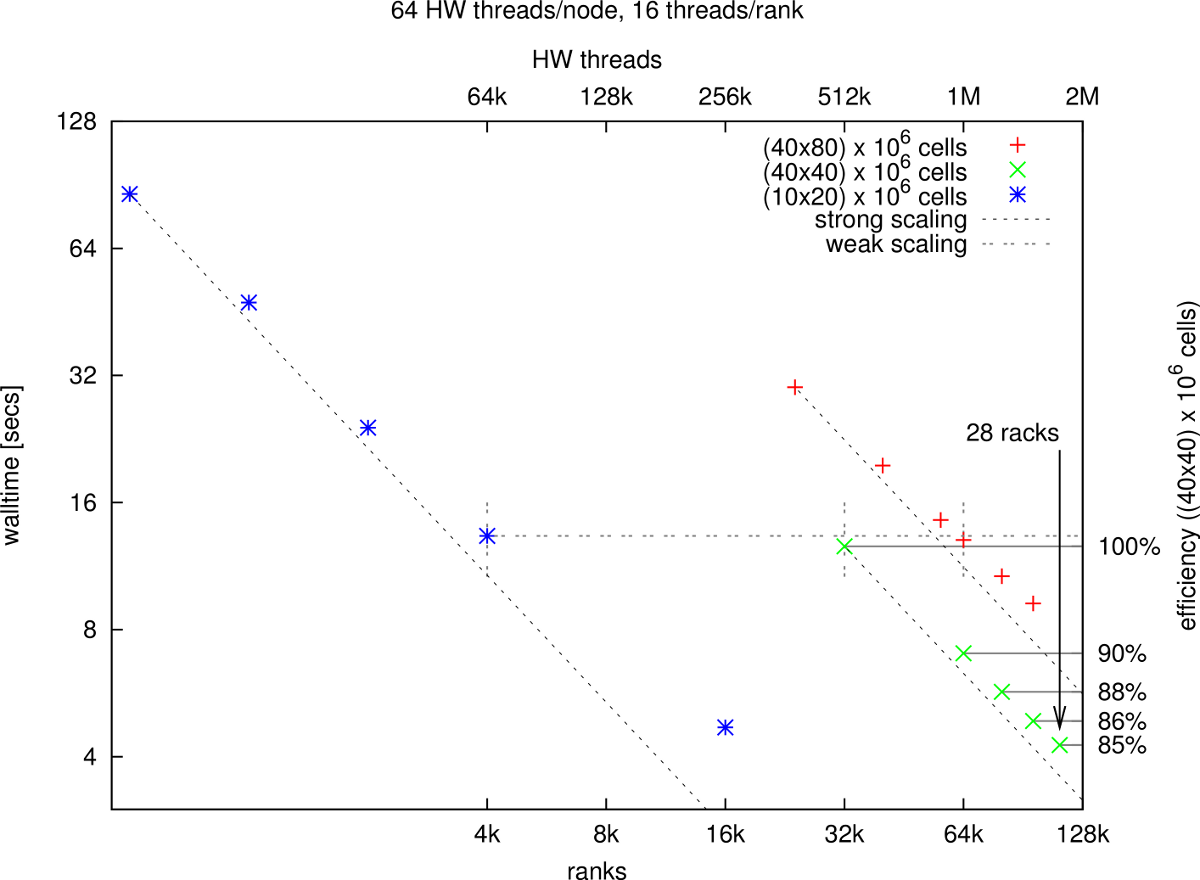JuSPIC
Jülich (Super-) Scaling Particle-In-Cell code
Overview
JuSPIC is a new open source development from JSC aiming for exascale machines. It is a particle-in-cell (PIC) code for particle simulations in electromagnetic fields. The non-linear interaction between the fields and the plasma is described by the relativistic Vlasov equation and Maxwell's equations. JuSPIC uses a mesh for the Maxwell fields and quasi-particles with continuous coordinates within the mesh for the distribution functions of the plasma. The Maxwell equations are integrated using the Finite-Difference-Time-Domain (FDTD) scheme. Finite element approximations of the distribution functions are then used to integrate the Vlasov equation along the particle trajectories.
The code is based on the open source Plasma Simulation Code (PSC) by H. Ruhl (c.f. Part I of Introduction to Computational Methods in Many Body Physics). Currently, JuSPIC is a slimmed-down version of the original PSC, re-written in modern Fortran. It performs substantially faster and scaled up to the full JUQUEEN with all 28 racks, making use of all 458k cores and more than 1.8 million threads, see figure. With this result, it qualified for the High-Q Club.
As part of the TEXT project, JuSPIC had been ported to support the new hybrid SMPSs/MPI programming model. The OpenMP version that evolved from this experimental hybrid version is now further developed.

Uses
The code can be used as a numerical tool in the field of intense laser-plasma interaction. Examples include the generation of energetic electrons and ions with help of the radiation field of the laser, strong quasi-steady electric and magnetic fields, large currents and energy flows, and the conversion of the irradiated laser energy into collective and collisional plasma heating [c.f. PSC manual].
Research projects involving the FZJ included proton acceleration from mass-limited targets and the generation of Megagauss magnetic fields in laser-plasma interaction. It has also been used for a project investigating laser induced THz radiation emitted from the rear side of thin metallic foils (Observation of Gigawatt-Class THz Pulses from a Compact Laser-Driven Particle Accelerator and Synopsis: Powering Up Teraherz Sources).
